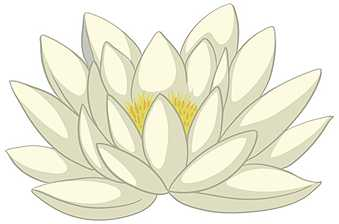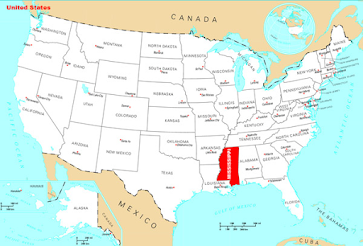
Você já ouviu a atriz Parker Posey em The White Lotus e ficou intrigado/a com o sotaque diferente que ela usa?
👉 Se não reparou, assista aqui a algumas falas dela.
O que você ouve é um sotaque sulista dos Estados Unidos, muitas vezes chamado informalmente de “cornbread accent” — algo como "sotaque caipira", associado à simplicidade, rusticidade e até ingenuidade.Mas, no caso de Posey, esse sotaque vem com uma nuance: ela o interpreta com o tom da elite sulista do Mississippi, para onde foi com a família quando ainda era pré-adolescente. Natural de Baltimore, Parker foi ainda bebê para West Monroe na Louisiana (LA) e aos 11 anos, para Laurel, Mississippi (MS). 
🌽 “Cornbread” pode ser ofensivo?Embora cornbread signifique literalmente pão de milho (receita aqui!), nos EUA essa palavra pode ser usada informalmente para descrever alguém ou um sotaque do interior, rústico ou simples, parecido com como usamos “caipira” no Brasil. Dependendo do tom e da intenção, "cornbread" pode soar pejorativo, como se sugerisse que a pessoa é ingênua, pouco sofisticada ou brega. Em inglês vs. Em portuguêsEm inglês | Em português | Tom | cornbread accent | sotaque caipira | informal, possivelmente ofensivo | country bumpkin | jeca / matuto | claramente pejorativo | Southern drawl | sotaque do interior | neutro ou até carinhoso |
Em alguns casos, no entanto, “cornbread” é usado com orgulho, como símbolo de identidade sulista — da mesma forma que há brasileiros que abraçam o termo “caipira” como algo cultural e afetivo. 🗣️ Exemplos: quando “cornbread” e “caipira” são ofensas ou elogios🔹 Uso pejorativoThat cornbread hick doesn’t know a thing about business.
→ Esse caipira aí não entende nada de negócios. She’s so cornbread, she’s never even been in an elevator!
→ Ela é tão caipira que nunca andou de elevador!
🔹 Uso positivo ou afetivoI may be cornbread, but I’ve got common sense and heart.
→ Pode me chamar de caipira, mas tenho pé no chão e coração bom. I'm proud to be a caipira. My roots are in the countryside.
→ Sou caipira com orgulho. Minha raiz é da roça mesmo.
🧠 O que muda aqui é o tom de voz e a intenção de quem fala. É como alguém dizer “sou caipira sim, e daí?”, transformando o termo em força identitária, não em vergonha. 🌸 O que é uma Southern Belle?
A personagem de Posey representa o arquétipo da Southern Belle, expressão que significa “beldade sulista” (vem do francês belle, "bonita"). Historicamente, o termo descreve jovens mulheres da elite agrária do sul dos EUA, especialmente antes da Guerra Civil (o chamado Antebellum South). Essas mulheres eram educadas para serem graciosas, bem-comportadas e atraentes — o ideal feminino da aristocracia rural. 📌 Em inglês: "Southern belle" is a colloquialism for a debutante or other fashionable young women in the planter class of the Antebellum South, particularly as a romantic counterpart to the Southern gentleman. 🌾 Mas o que significa planter families?A expressão planter families se refere às famílias proprietárias de grandes plantações no sul dos EUA, como algodão ou tabaco — muitas das quais dependiam do trabalho escravizado. Elas formavam a aristocracia rural da região. Veja abaixo algumas possíveis traduções para planter families no contexto histórico: Famílias de fazendeiros ricos – tradução neutra e acessível. Famílias proprietárias de plantações – mais literal e fiel. Famílias escravistas – em contextos críticos ou focados na escravidão. Aristocracia rural sulista – em textos que destacam o status social.
✨ Aprendizado para além do vocabulárioA escolha do sotaque por Parker Posey não é aleatória: ela usa a linguagem para construir identidade de classe, região e gênero — algo muito comum no inglês e crucial para estudantes mais avançados entenderem. Expressões como Southern belle, planter families e cornbread accent carregam não só significado literal, mas também camadas históricas e culturais. 🎓 Southern Culture & Language QuizInstructions: Read each question carefully and choose the best answer (A, B, C, or D). Then check your answers at the bottom of the page. What does the expression “cornbread” suggest when used to describe a person?
A) The person is wealthy and sophisticated
B) The person is rustic or from a rural background
C) The person is very fashionable
D) The person is from the city
In which U.S. region is the "cornbread accent" typically found?
A) The West Coast
B) The Midwest
C) The South
D) New England
What is a “Southern belle”?
A) A slang word for a Southern dish
B) A poor rural woman from the South
C) A fashionable young woman from a wealthy Southern family
D) A nickname for a Southern grandmother
“Planter families” were typically…
A) Immigrants who worked in textile factories
B) Wealthy landowners with large farms or plantations
C) Families that lived in the mountains and hunted
D) Politicians from Northern states
Which of the following sentences uses “cornbread” in a positive or proud way?
A) That cornbread girl doesn’t even know how to use a phone.
B) He’s so cornbread, he thought New York was a country.
C) I may be cornbread, but I’ve got common sense and heart.
D) She’s a cornbread mess, bless her heart.
In the sentence “She’s so cornbread, she’s never even been in an elevator,” what does the speaker imply?
A) She’s afraid of heights
B) She’s very modern
C) She’s extremely rural and inexperienced
D) She lives in a mansion
Why might someone call themselves “caipira com orgulho” in Portuguese?
A) To deny being from the countryside
B) To express shame about their background
C) To show pride in their rural roots
D) To sound more urban and modern
✅ Answer Key:
B
C
C
B
C
C
C Se você gostou deste conteúdo e quer aprender mais sobre o inglês além da gramática, siga acompanhando o blog!
💬🇺🇸 Inscreva-se para receber e-mails sempre que houver um novo post.
É grátis e não uso seu e-mail para enviar spam.
|

